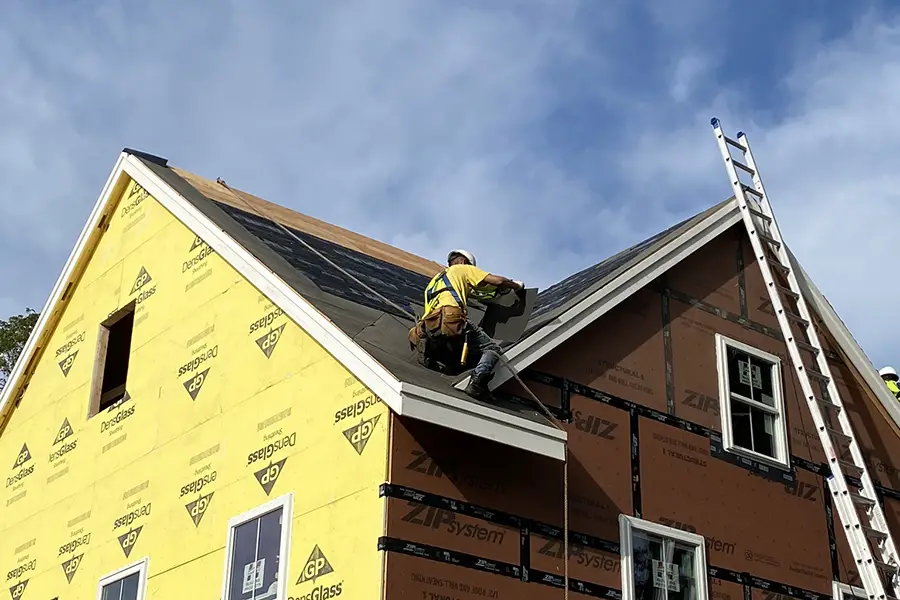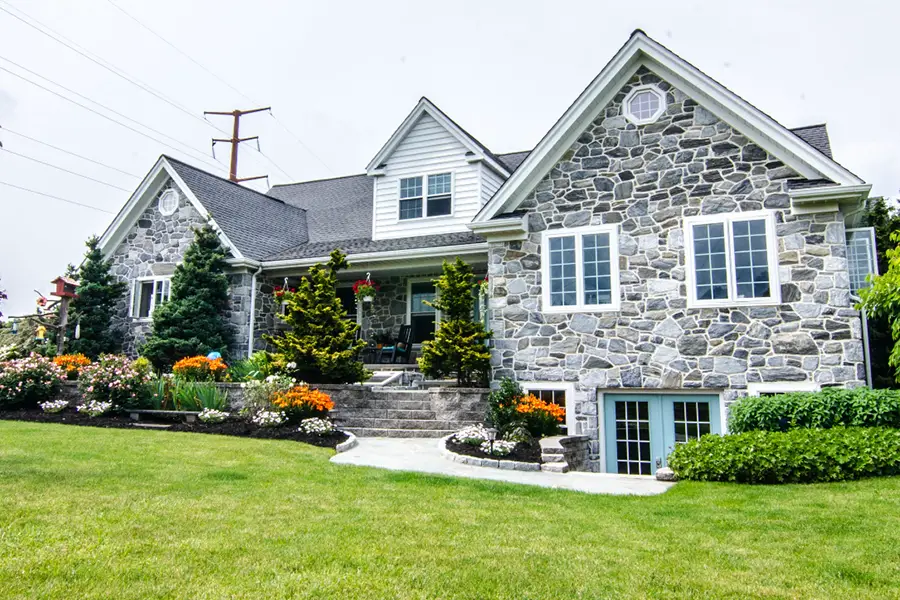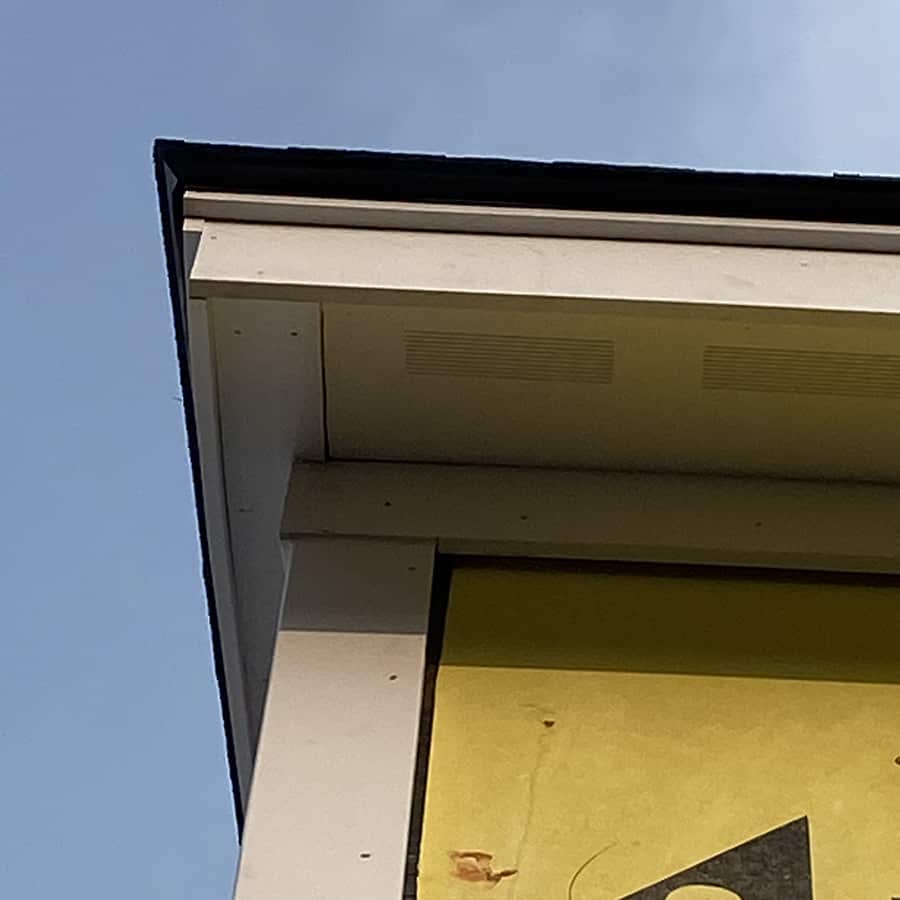A cozy fireplace in the home draws you in and creates a peaceful, inviting space to relax and spend time with those you care about. My parents, for example, deliberately placed their TV on the opposite end of the house so that the “fireplace room” of their older home became a room that was purely focused on togetherness.
While the benefits (and luxury!) of having a fireplace in your home are undeniable, they also come with a bit of maintenance and necessary education. If you’ve purchased a home with a fireplace or are adding an addition with a fireplace, make sure you do a little homework. Chimney caps are an important part of the system and not to be overlooked! Let’s dive in.
What Are Chimney Caps?
Chimney caps are a fixture that attaches to the top of the chimney. They are typically stainless steel or copper, but can also be made of masonry as well. They can be flat, rounded, or peaked, and typically extend 2-6” past the chimney’s crown. While chimney caps are not necessarily required by the modern IRC and may not be already installed on older homes, they are generally considered indispensable for chimney safety and care.
Chimney caps serve several purposes:
- Spark Arrestor – Chimney caps keep sparks from flying out and landing on nearby trees, your roof, or your neighbor’s roof (on a windy day).
- Water Barrier – Chimney caps are the first line of defense for keeping the weather out of your home. Because they sit over the opening and overhang, it would have to be raining at a pretty specific diagonal angle for them to not be effective at keeping out precipitation!
- Debris Blocker – Many chimney caps are also installed with a screen that is anchored inside the chimney. This effectively keeps out leaves, twigs, and other detritus that gets carried and moved by wind, also effectively minimizing the need to clean the chimney frequently!
- Critter Deterrent – The screen and cap work together to make it pretty challenging for any sneaky birds or rodents to enter your home through the chimney.
- Limit Downdrafts – Sure, hot air rises, but with the right weather and pressure conditions, you can also get colder outside air entering the home through the chimney and fireplace. Chimney caps help minimize and prevent this.
Do I need one? What does the IRC Recommend?
Again, while preferred by most but not required by the IRC, they do have a few guidelines if you want to add one or check the condition of one before purchasing a home:
- R1003.9.1 Chimney Caps – Masonry Chimneys shall have a concrete, metal, or stone cap, a drip edge and a caulked bond break around any flue liners in accordance with ASTM C1283. The concrete, metal, or stone cap shall be sloped to shed water.
- R1003.9.2 Spark Arrestors – When a spark arrestor is installed on a masonry chimney, it shall meet the following requirements: Arrestor shall not be less than 4 times the net free area of the outlet of the chimney flue, it shall have heat and corrosion resistance equivalent to 19-gauge galvanized steel or 24-gauge stainless steel, openings shall be no greater than ½” or smaller than ⅜”, and the spark arrestor must be accessible and removable for cleaning of both the screen and flue.
- R1003.9.3 Rain Caps – When installed on a masonry chimney, the net free area under the cap shall not be less than 4 times the net free area of the outlet of the chimney flue it serves.
Considerations for Choosing a Chimney Cap
- Consider your geographical location and any extreme weather conditions. For example, Do you live in an excessively windy area?
- What type of flue do you have? The type of cap you’ll need for your chimney depends almost entirely on the type of flue. We talk more about chimney flues and liners here.
- Your chimney cap should not interfere with draft, and should “fit” your chimney. Take measurements, and compare those of your chimney against the manufacturer’s recommendations for sizing.
Chimney Cap Materials
The most popular (and recommended) materials for chimney caps are:
- Galvanized – Efficient, inexpensive, last around 5 years, utilitarian

- Aluminum – Inexpensive, more corrosion resistant than galvanized, shinier finish that looks higher end, but not very sturdy, does not hold up as well in intense winds and weather

- Stainless Steel – Weather-resistant, shiny finish, lifetime warranty, reasonably priced for the quality, all-around winner

- Copper – Stylish, weather-resistant, long-lasting, sturdy, expensive

Installation Tips
- Most chimney caps will come with the needed hardware to anchor it to the chimney, but you’ll need your own tools. For some, a screwdriver might work, for others, you may want a properly-sized ratchet. If working with masonry, you may even need a masonry bit and adhesive or caulk in order to install correctly.
- Be careful, and use a tether for personal safety. There’s no need to be reckless, accidents can happen!
- Check out the quality of your chimney while you’re up there- it can be a good time to see if there are any cracks in your masonry or damage to the flue that is in need of repair.
Tips for Cleaning/Maintenance
Overall, chimney caps are pretty low-maintenance. The main things to focus on are keeping the screens clear of debris and leaves and checking the screen for holes or damage that may allow critters inside. If your chimney cap has any moving parts, make sure to check on their operability.
In general, whenever you find yourself on the roof, take a casual, careful stroll over to your chimney and check on it. If you aren’t a frequent roof stroller, regular maintenance in spring or early summer, and once again during mid to late fall are good times to check-in and make sure all is well.
Wrap up
Chimney caps are a great way to protect your home and chimney from the elements and from wildlife, while also helping with downdrafts and serving as a spark arrestor. You may be able to install one yourself, but reaching out to a professional for advice and professional installation is never a bad idea.
Do you have a chimney cap installed on your chimney? Tell us about it below.





I appreciate you informing us that while it may not be necessarily required by local regulations to own a chimney cap, it is quite indispensable when it comes to chimney safety and care since it helps keep sparks from flying out and landing on nearby trees. I recently moved into a house with a chimney installed, so I wanted to make sure it is kept in good condition and ready for winter. I’ll take note of this while I look for a provider to contact about my chimney flue cap installation soon.
I appreciate you mentioning that your chimney cap should “fit” your chimney and not obstruct the draft. I’ll keep in mind to measure your chimney and compare the results to the sizing guidelines provided by the manufacturer. We’re looking for a home chimney crown restoration business because ours was damaged in a hurricane, so I’ll forward this to my spouse. What you suggested here, I’m sure, would also be the best option.